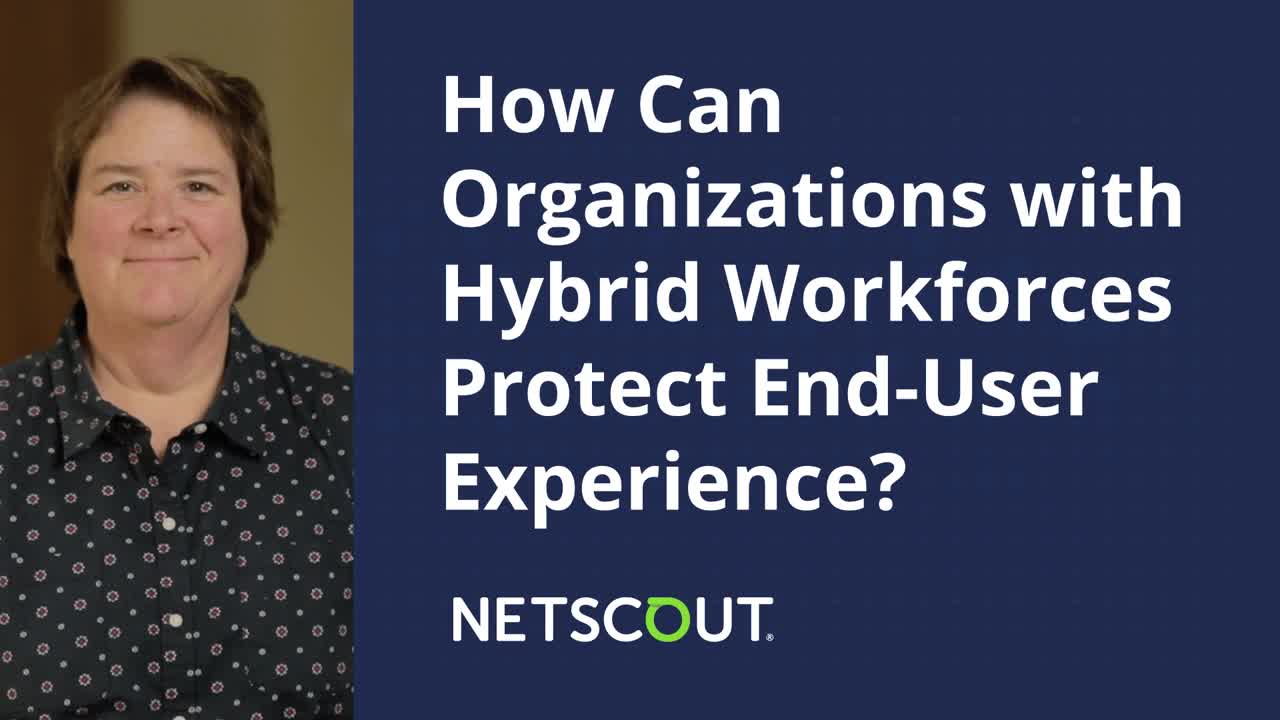How Can Organizations with Hybrid Workforces Protect User Experience?
Learn how enterprises can address one of IT’s biggest challenges in problem identification and resolution within complex, multivendor environments.

In the early days of the COVID-19 pandemic, the workforce dramatically shifted to a work-from-home posture. But over the past several months, many companies have begun to bring their employees back to the office—at least on a part-time basis. This hybrid mix of remote and onsite work has become the new normal: A recent study from Accenture found that 63 percent of high-growth companies have adopted a hybrid work model. These companies have put a premium on ensuring their workforce is both healthy and productive—an approach that is yielding bottom-line benefits.
The same study found that 83 percent of workers in general prefer a hybrid model. And even digitally native Gen Z employees want some onsite work. The report revealed that 74 percent of Gen Z respondents preferred to interact with colleagues in person, while 68 percent of baby boomers and 66 percent of Gen Xers stated a desire to work in a hybrid mode.

Hybrid Work Model Puts Onus on Delivering a Good End-User Experience
As more and more employees are asked to adopt a hybrid work model, it is imperative to ensure they have the tools required to execute their jobs effectively. This means collaboration tools and business applications must deliver a superior end-user experience.
Unified communications and collaboration (UC&C) systems are increasingly relied upon in this hybrid context. Another survey found that 76 percent of employees use video conferencing for remote work. As corporate infrastructures become more complex, relying on multiple vendors to deliver vital services both to home and office workspaces, IT faces a large challenge in being able to identify and resolve problems quickly.
With a growing list of applications, including software as a service (SaaS), unified communications as a service (UCaaS), and data center-based services operating at the edge, IT organizations are under pressure to assure the end-user experience. To accomplish this, they need comprehensive visibility and integrated analysis throughout the transaction ecosystem.
So Many Edges, So Little Visibility
With so many edges in today’s IT environments, there are gaps in visibility that make it difficult to determine whether problems are occurring at the client edge, network edge, or data center/cloud service edge.
Traffic problems at these edges can result in delayed logins, slow responsiveness, and even outages in key business applications, all of which have the potential to negatively impact employee productivity and customer service.
As a result of the limited visibility across so many edges, IT needs vendor-agnostic tools that can quickly identify the source of issues. Smart edge monitoring is the answer to this dilemma.
The Power of Monitoring Packet Data at the Edge and Synthetic Testing Data
Smart edge monitoring results from bringing packet data, gathered at the edge, together with synthetic testing. NETSCOUT Smart Edge Monitoring is a new, patent-pending architecture that provides complete visibility and insights for IT teams to assure the highest-quality employee digital experience for any network or application, regardless of where users perform their jobs.
When performance problems begin to develop for the remote user, smart data transaction tests alert IT of a potential problem, which can be quickly resolved via the solution’s powerful service triage workflows. Early detection and rapid resolution of such problems reduces employee frustration and lost productivity and may even avoid broader-scale outages.
NETSCOUT is an industry leader in smart edge monitoring. Our Smart Edge Monitoring solution provides comprehensive, borderless monitoring and visibility and is the most effective way to assure the best end-user experience in today’s complex, hybrid workplaces.
To learn more about how organizations with hybrid workforces can protect end-user experience, visit https://www.netscout.com/smart-edge-monitoring/remote-workforce .